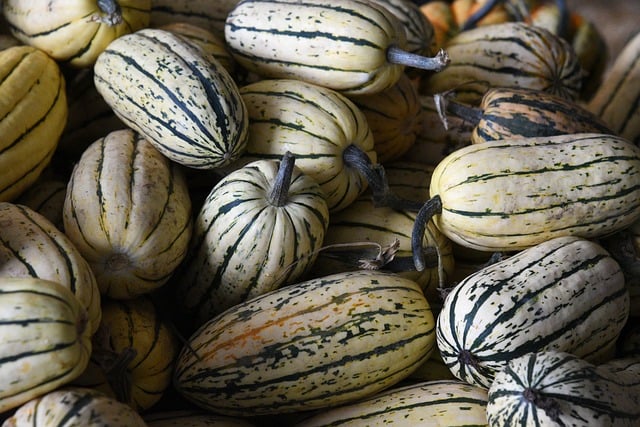Darren Martin Realty specializes in helping buyers find their dream farms in Grey-Bruce, Ontario. Wi…….
Category: Grey-Bruce Ontario Farms for Sale
Grey-Bruce Farms for Sale keyword
Grey-Bruce Ontario Farms for Sale: A Comprehensive Analysis
Introduction
In the heartland of Canada, nestled between the sparkling shores of Lake Huron and the rolling hills of Bruce County, lies a vibrant sector that has captured the attention of investors, farmers, and enthusiasts alike—Grey-Bruce Ontario Farms. This region, known for its fertile soil, picturesque landscapes, and rich agricultural heritage, offers an array of opportunities for those seeking to invest in or manage farm properties. The “Grey-Bruce Ontario Farms for Sale” market is a dynamic and ever-evolving landscape, presenting both established farmers and aspiring agribusinesses with unique prospects. This article aims to provide an in-depth exploration of this captivating segment, unraveling its intricacies, highlighting its significance, and offering valuable insights for those navigating this space.
Understanding Grey-Bruce Ontario Farms for Sale
Definition: Grey-Bruce Ontario Farms for Sale encompasses the real estate market specific to agricultural properties located within Grey and Bruce Counties in Ontario, Canada. These farms vary in size, from modest family-owned operations to expansive commercial ventures, each contributing to the diverse agricultural landscape of the region.
Core Components: The primary elements of this market include:
-
Agricultural Land: The backbone of Grey-Bruce farms, encompassing fields suitable for crop cultivation and grazing lands for livestock. Soil quality and accessibility to water sources are key determinants of a farm’s value.
-
Farm Buildings and Infrastructure: This includes residences, barns, silos, grain bins, and other support structures vital for the operation and maintenance of the farm. The age, condition, and uniqueness of these buildings can significantly impact property value.
-
Water Resources: Access to clean water is essential for agricultural activities. Farms with wells, spring sources, or proximity to lakes and rivers hold higher appeal.
-
Location: Proximity to transportation networks, markets, and urban centers influences the desirability of a farm. Easy accessibility facilitates the distribution of produce and livestock, impacting profitability.
Historical Context: The agricultural history of Grey and Bruce Counties dates back centuries, with European settlement leading to the establishment of diverse farming communities. Over time, the region has seen a shift from family farms to larger-scale operations, driven by technological advancements and changing market demands. The 21st century has brought new dynamics, including a growing interest in sustainable agriculture, organic farming, and value-added products, all of which shape the modern farm landscape.
Global Impact and Trends
The global impact of Grey-Bruce Ontario Farms for Sale is significant, as the region’s agricultural produce contributes to the broader Canadian and international food systems. Here are some key trends shaping this market:
-
Global Food Security: With a growing world population, there is an increasing demand for high-quality, locally produced food. Grey-Bruce farms play a crucial role in meeting this demand, ensuring food security on both national and global scales.
-
Organic and Sustainable Farming: There is a rising consumer preference for organic and sustainably grown produce. Many Grey-Bruce farms have embraced these practices, catering to the growing market for environmentally friendly agricultural products.
-
Agritourism: The concept of agritourism is gaining traction worldwide, offering farm experiences to urban visitors. This trend has opened new avenues for farm owners to diversify their income streams and engage with a wider audience.
-
International Investment: Foreign investors are increasingly showing interest in Canadian agricultural properties, including those in Grey-Bruce. This influx of investment capital can lead to significant price fluctuations and market dynamics.
Economic Considerations
Market Dynamics
The economic landscape of Grey-Bruce Ontario Farms for Sale is characterized by:
-
Seasonal Fluctuations: Agricultural markets often experience seasonal variations, with peak demand and prices during certain times of the year. Spring and early summer are typically busier periods due to planting and initial crop development.
-
Crop Diversification: Farmers in this region have diversified their crops to meet market demands and mitigate risks. This includes a mix of traditional grains like wheat and corn, as well as specialty crops such as grapes, berries, and organic vegetables.
-
Livestock Sales: The sale of livestock, including cattle, pigs, and poultry, is a significant aspect of the local economy. These sales are often influenced by market prices and seasonal trends.
Investment Patterns
Investment in Grey-Bruce farms has shown consistent growth over the years:
-
Domestic Investment: Many local farmers invest in additional properties to expand their operations or diversify their portfolio. Family trusts and agricultural investment groups also contribute to this domestic investment trend.
-
International Investment: As mentioned earlier, foreign investors are drawn to Canada’s agricultural sector. This includes individuals from the United States, Europe, and Asia who seek to diversify their investments in a stable and prosperous market.
-
Investment Funds: Specialized agricultural investment funds have emerged, focusing on purchasing farmlands and managing them for long-term growth. These funds provide capital for infrastructure upgrades and modernizations.
Price Trends
Farmland prices in Grey and Bruce Counties have generally been on the rise due to:
-
Increasing Demand: The region’s reputation for high-quality agricultural produce has attracted buyers from both local and international markets.
-
Low Interest Rates: Favorable lending conditions have encouraged investment in farmland, driving up prices.
-
Scarcity of Available Properties: With a limited supply of suitable farmlands, especially those with prime locations and access to water, prices tend to be higher for these desirable properties.
Technological Advancements and Farm Operations
Technology plays a pivotal role in modernizing Grey-Bruce farms:
-
Precision Agriculture: Farmers employ GPS technology, sensors, and data analytics to optimize crop cultivation and livestock management. This precision approach improves efficiency, reduces waste, and enhances overall productivity.
-
Automated Systems: Automated feeding systems, milking machines, and other mechanical aids streamline daily farm operations, allowing farmers to manage larger operations with reduced labor costs.
-
Online Marketplaces: Digital platforms facilitate the sale of agricultural products directly to consumers, providing farmers with access to a wider customer base.
Challenges and Opportunities
Challenges:
-
Climate Change: Extreme weather events and changing climate patterns pose challenges to traditional farming practices. Farmers must adapt by adopting resilient crop varieties and sustainable management strategies.
-
Labor Shortages: Finding skilled labor, especially for specialized tasks, remains a challenge in the agricultural sector. Automation can help mitigate this issue but may also require significant investment.
-
Regulatory Compliance: Grey-Bruce farms must navigate various environmental and health regulations, ensuring compliance to maintain operations and avoid penalties.
Opportunities:
-
Diversification: Farmers can capitalize on emerging trends like agritourism, value-added product development (e.g., artisanal cheese, craft beers), and organic farming to create new revenue streams.
-
Research and Development: Collaboration with local universities and research institutions allows farmers to stay at the forefront of agricultural innovation, improving crop yields and livestock health.
-
Community Engagement: Building strong relationships with local communities can lead to cooperative ventures, such as community-supported agriculture (CSA) programs, which enhance direct consumer engagement.
Sustainable Agriculture and Environmental Considerations
Sustainability is a growing focus within the Grey-Bruce farm community:
-
Organic Farming Practices: Many farmers have adopted organic methods to meet consumer demands for chemical-free produce while also preserving soil health and biodiversity.
-
Water Conservation: Implementing efficient irrigation systems and water recycling practices helps farmers use resources responsibly, especially in light of water scarcity concerns.
-
Renewable Energy: The integration of renewable energy sources, such as solar panels and wind turbines, provides alternative power solutions for farm operations, reducing environmental impact.
Regulatory Framework and Support
The Canadian government, along with provincial authorities, offers various programs to support the agricultural sector:
-
Agricultural Grants: Farmers can access grants for specific initiatives, including sustainable agriculture, technology adoption, and infrastructure development.
-
Tax Incentives: Tax benefits are available for certain agricultural practices, encouraging farmers to embrace eco-friendly and efficient methods.
-
Rural Development Programs: These programs aim to enhance rural communities’ economic well-being, providing support for farm-related businesses and infrastructure projects.
Conclusion
Grey-Bruce Ontario Farms for Sale represent a vibrant and dynamic segment of Canada’s agricultural sector, offering both established farmers and newcomers a unique blend of challenges and opportunities. The region’s rich history, fertile land, and favorable conditions make it an attractive destination for those seeking to invest in or manage farms. As the global demand for food continues to rise, this market is poised for further growth and innovation. By embracing technological advancements, sustainable practices, and community engagement, Grey-Bruce farms can ensure their longevity and contribute significantly to local and global food security.
Discovering Opportunities: Grey-Bruce Farms for Sale with Darren Martin Realty
The market for Grey-Bruce Farms for Sale is experiencing a renaissance, attracting investors and rur…….
Discover Your Rural Dream: Grey-Bruce Farms with Darren Martin Realty
Darren Martin Realty offers a diverse selection of Grey-Bruce farms for sale in the serene region of…….
Discover Grey-Bruce Ontario Farms for Sale with Darren Martin Realty
Darren Martin Realty specializes in Grey-Bruce farms for sale, catering to both experienced farmers…….
Acquiring Your Dream Farm: A Guide to Grey-Bruce Purchases with Darren Martin Realty
Darren Martin Realty is a trusted guide for buying farms in Grey-Bruce, Ontario, where diverse lands…….
Discovering Farm Opportunities: Grey-Bruce Ontario Farms via Darren Martin Realty
Darren Martin Realty is revolutionizing the rural real estate market in Grey-Bruce, Ontario by facil…….
Guide to Buying Grey-Bruce Farms: Darren Martin Realty Expertise
Darren Martin Realty specializes in guiding buyers through the unique and lucrative market of Grey-B…….
Grey-Bruce Farms for Sale: A Comprehensive Guide with Darren Martin Realty
Darren Martin Realty specializes in guiding buyers through the process of purchasing Grey-Bruce farm…….
Discover Sustainable Living: Exploring Grey-Bruce Farms via Darren Martin Realty
Darren Martin Realty specializes in connecting farmers with their ideal Grey-Bruce farms for sale in…….
Darren Martin Realty: Unlocking Grey-Bruce Farms for Sale Market Trends
The market for Grey-Bruce Farms for Sale is experiencing a surge in interest due to increasing deman…….










